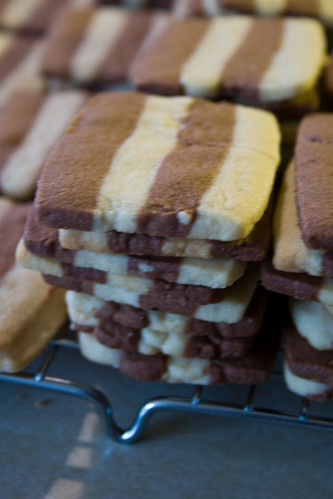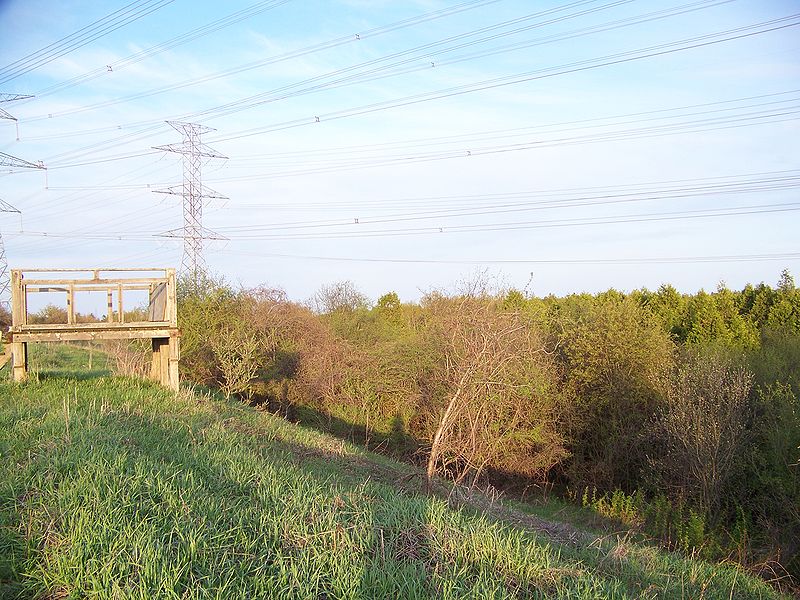Still haven't got my laptop back (!), but I decided that I don't need to spend all of my Sunday-in-the-lab writing fellowship applications. Anyway, last weekend was the big field trip for the intro geo class that I TA for. We spent some time looking at the geology and history of Niagara Falls (which are apparently not very exciting if it's a Sunday morning and you've been indulging the night before), with some stops on the Niagara Escarpment and the shores of glacial Lake Iroquois. (And yes, oh whiny students, the professor is pronouncing it Lake "Iro - kwas". That's the way the French say it. Not only do we live near Canada, your professor is also European, and pronounces a French word the French way. GET OVER IT.)
Photos will have to wait until I have a laptop again, but one of my favorite field locations that weekend was on the shore of Lake Iroquois, where we could see strand lines of the ancient lake, as well as rounded boulders pushed up on the lakeshore by storms 13,000 years ago. (Some of the local houses even used the boulders and cobbles to build their foundations, or line driveways or paths.) Here's what the shoreline looks like at the Heber Down Conservation Area in Ontario, since I can't show you any of my own photos:
It's not terribly dramatic visually, but it certainly is if you're thinking about the history of the area. Most times we see evidence of ancient lacustrine environments, it's as lithified sediments, or cross-stratification, but here you can actually stand on the shore of a lake that's
hasn't been there for thousands of years. Muy cool.
Unfortunately, most of the students on the trips don't even know that they saw this field location. Why not? Because it wasn't a place where we stopped the bus and made them get off and look at something. Oh, it was on their handouts for the day - Stop 5,
en route to Lockport. We didn't get out and look at a pile of boulders or the slope of the shoreline; instead, we took a road that followed the shoreline for about ten miles, with the professor and I loudly discussing the boulders and the fact that we were driving on a ridge.
Ooh, tricky. Actually, it's something that I saw my undergraduate profs do every once in a while to see if we were paying attention. My advisor's favorite car game was "guess the azimuth"; and boy, after the first few times that I didn't know where we were on a map, or what mile marker we'd just passed, or how much elevation change had just happened, I began looking like an owl, my head was swiveling so much. Fear of embarrassment builds wonderful observation skills.
Last weekend's students, however, are not going to do so well on their field trip reports, because very few of them bothered to ask why we hadn't stopped at Stop 5, much less noticed that we were on an ancient shoreline. I'm anticipating a lot of complaining about us not spoon-feeding them everything they needed to know. (Not from everyone; there were some genuinely observant and interested people on the trips, and I think they'll do all right on the reports.)
What I find astonishing is that some of these students will be complaining that they were
expected to pay attention. They didn't even have to stare out the windows of the bus every second we were traveling, or ask insightful questions in between stops - they just had to
read their field trip guides, which made it fairly obvious that this was a "trick" stop. For the love of little green apples, people, you barely needed to glance out the window to see that we were on a ridge and then connect it to the "You might notice that we're traveling on a ridge..." question on your handouts. Fine, none of them had ever been on this sort of a field trip before; you don't have to be a trained geologist to use your eyes, though. Is this normal for students nowadays? I mean, I was their age not too long ago, and even just out of high school I can't imagine being so offended at being asked to think just a tiny bit.
(This whole affair sort of reminds me of the "Galileo Was Right" episode of
From the Earth to the Moon, where NASA gets Lee Silver to take the Apollo 15 astronauts out in the field and teach them how to be geologists. They start off much like my students - "wow, that's a rock, great, it's sparkly" - but they quickly learn the value of being good observers. It just goes to prove that even if you're not professionaly trained in geology, or even really excited about it, you can
still be good at it - after all, the Apollo 15 folks managed to find a piece of anorthosite, which provided one piece of proof toward the idea that the Moon was created from a chunk of the Earth.)



 It's not even Halloween yet! The snowflakes were really pretty this morning, and it hasn't stuck to anything, but I'm sort of torn between that giddy-excited-wow-it's-snowing feeling and being disgruntled because it's cold and wet and October.
It's not even Halloween yet! The snowflakes were really pretty this morning, and it hasn't stuck to anything, but I'm sort of torn between that giddy-excited-wow-it's-snowing feeling and being disgruntled because it's cold and wet and October.

 I think I was discussing something geology-related while she was slicing them (basically, you make the dough, stack strips of the alternating colors, and then slice the cookies off the resulting "logs"). A few cookies toward the end were messy, and she stopped to look at them for a moment. "What if I do this?" she asked, adding a few extra slices and smashing the pieces back together. Which resulted in something that looked like this:
I think I was discussing something geology-related while she was slicing them (basically, you make the dough, stack strips of the alternating colors, and then slice the cookies off the resulting "logs"). A few cookies toward the end were messy, and she stopped to look at them for a moment. "What if I do this?" she asked, adding a few extra slices and smashing the pieces back together. Which resulted in something that looked like this: Fault cookies! (I love my mom. She made plate tectonics tasty.) I don't think I'll have a chance to use this one in lab, but it's good to keep in mind for later teaching opportunities.
Fault cookies! (I love my mom. She made plate tectonics tasty.) I don't think I'll have a chance to use this one in lab, but it's good to keep in mind for later teaching opportunities. (From Wikipedia)
(From Wikipedia)